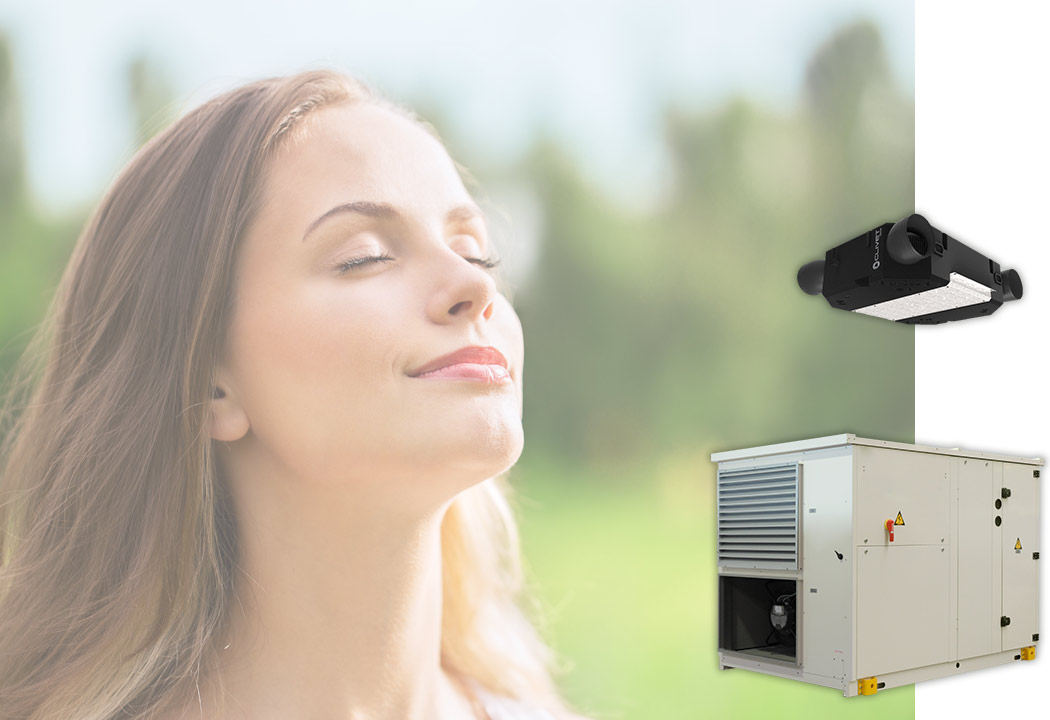Recover the thermal energy in the stale air extracted from rooms, which would otherwise be lost, to ensure indoor air quality while avoiding energy waste. This is the job of the heat recovery system, a component now present in most air renewal units, which over the years has evolved significantly, thus becoming more and more highly efficient.
What is a heat recovery system and how does it work?
As the word itself implies, heat recovery systems are “technological devices” that transfer heat between two fluids (air or water). In the specific case of ventilation systems, this transfer occurs between two air flows: the heat is recovered from the flow of the exhaust air in the indoor environment to the outside, and then transferred to the inlet air flow. It is no coincidence that with controlled mechanical ventilation, which is the most popular solution for achieving correct and constant air exchange in rooms without having to open the windows, as much as 80-90% of the heat in the air can be recovered before it is expelled.
Cross-flow heat recovery technology
Cross-flow heat recovery systems are among the most popular air-to-air recovery systems and can be combined with heating or cooling coils to reduce the amount of energy required to maintain indoor conditions. They usually consist of specially designed metal plates (aluminium or steel) that are assembled together and which allow heat to be transferred, either by convection or radiation, from the exhaust air to the clean air from outside, without the two flows ever coming into contact.
This type of heat recovery system is normally fitted with a bypass damper, which excludes some or even all of the inlet outside air from the recovery treatment. The reason? To avoid the risk of frost during the winter or simply to use free-cooling, i.e. “natural” cooling achieved when the outdoor air temperature is low enough not to require further treatment. Cross-flow recovery systems are capable of recovering between 40 and 70% of the heat and in some cases can achieve nearly 80% efficiency.
Transferring moisture with the enthalpy heat recovery system
In controlled mechanical ventilation systems, one often hears about the enthalpy heat recovery system. What does it mean and what is the difference compared to standard systems mentioned before? This device not only recovers the sensible thermal energy, i.e. heat, from the exhaust air flow, but also the moisture value. The result in this case is twofold: on the one hand, overall efficiency is increased, and on the other hand, the inlet air does not become too dry. Enthalpy heat recovery systems are also made of porous materials, as they must transfer not only heat but also vapour from the outlet air to the inlet air and vice versa.
Heat recovery becomes even more efficient: thermodynamic recovery
The cross-flow heat recovery system, and also the single-flow one, are commonly referred to as static because they don’t involve any moving part. To increase the overall efficiency of the system, many air handling units feature a second energy recovery system. In this case, we are talking about units with thermodynamic recovery, in which the first static recovery system is combined with a second active system, created with a heat pump refrigerant circuit.
The static cross-flow recovery system transfers heat from the exhaust air to the fresh air, while the heat pump refrigerant circuit starts up to support the former when the indoor and outdoor air temperature conditions require it. The result is a significant energy saving combined with improved thermo-hygrometric comfort and air quality.

